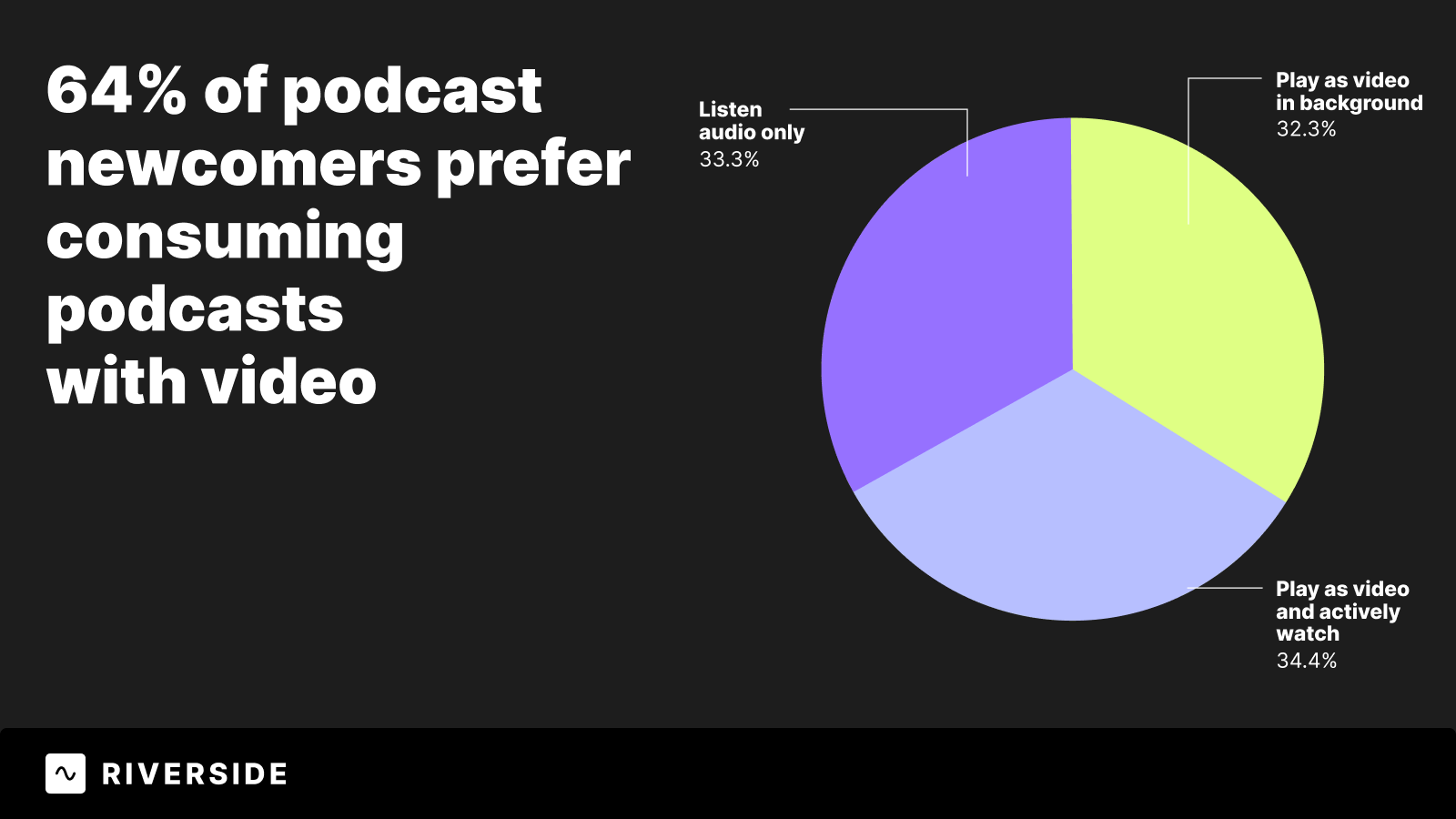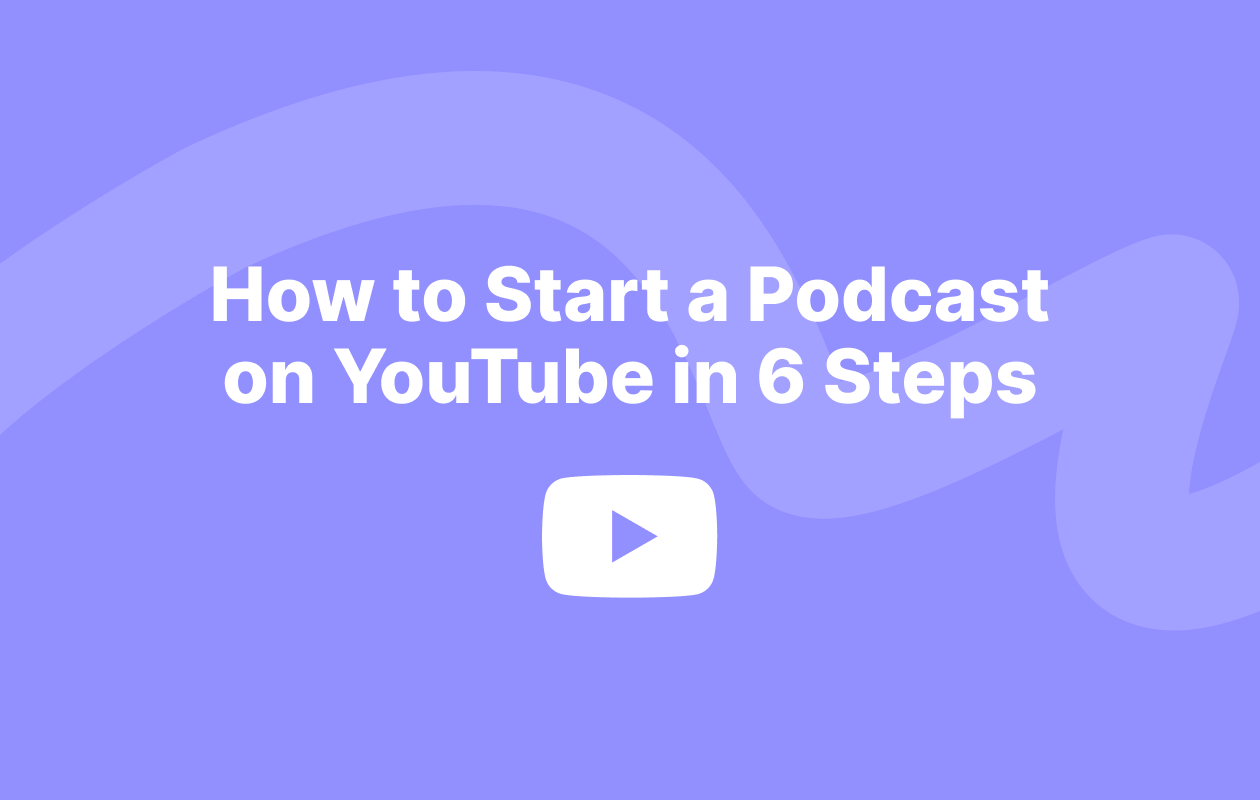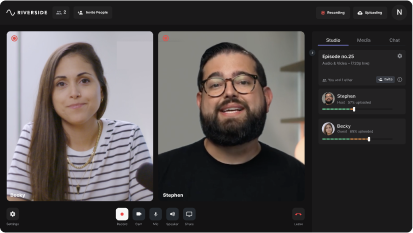
With video podcasting’s momentous rise in popularity, Riverside’s Annual Report dives deeper into this impactful medium. As the 6th of an 11-part series, this article uncovers how companies are recording video podcasts.
What’s in it for me?
By the end of this section, you’ll have key insights on the following points:
- How companies are recording video podcasts
- The best way to record video content with ease
Overview of recording video podcasts
There are many methods for recording video podcasts, with the primary two being: remote recording and in-person recording.
These vary greatly in preparation, but not so much in the desired end result. Both methods are seeking to capture and publish great content. The way this is achieved is the difference.
In this section, we’ll dive into 3 remote solutions that allow you to record content via the internet. We’ll also discuss in-person recording and how this can be achieved.

Using a remote recording software
The top option here is to record interviews with a dedicated remote-first solution. Tools like Riverside make it easy to record in high quality without the worry of poor internet ruining a call.
These platforms focus on recording great video and audio content more than other solutions, making them highly appealing to companies who value quality.
Pros of remote recording software
- Recording with people who used to be unreachable
- Quality is not dependent on internet connection
- Connecting with guests on a global level
- Ability to live stream within the platform
- Easy access to tools for guests
- Highly affordable
Using a conferencing software
Many video podcasts are recorded using a video conferencing platform, such as Zoom, Skype, or Google Meet.
These platforms allow the podcast host and their guests to connect and communicate over the internet, and can be a great way to record a video podcast remotely. However, it’s important to note that none of these allow for high-quality audio and video recording.
Pros of conferencing software
- Many people are familiar with these apps and how to use them
- These platforms are flexible with settings and customization
- Each provides quick links to make joining a recording easy
- They are relatively affordable
Using a live streaming software
Some video podcasts are recorded using a live streaming platform, such as YouTube Live, Twitch, or Facebook Live.
These platforms allow the podcast host to broadcast their podcast live to an audience, and can be a great way to engage with viewers in real-time. These are the most difficult platforms to use to achieve the end result of getting publishable video podcasts.
Pros of live streaming software
- Greater connection to audience through live content
- Better built-in social aspect for each show
- Sessions can be more real to life and require less effort to polish
Recording video in-person
Since the COVID-19 pandemic, remote recording has become an essential tool for capturing video and audio content. There are, however, many instances where in-person content is still valuable and needed.
The cons of this recording method all lie within equipment, logistics, preparation, and costs. Each of these elements are far more difficult to master when recording in person.
Pros of recording in-person
- Ability to capture body language more fully
- Ability to tell stories more effectively in some cases
- Ability to craft a studio-grade production
Read more from the 2023 Riverside Annual Report series:
- Why has video podcasting become increasingly popular
- What are the major benefits of a video-first podcast compared to a standard show
- How video podcasting has changed in the past several years
- How different audiences are responding to video podcasts
- Who benefits the most from a rise in video podcasting















-in-5-steps-(1).png)

.jpg)
 (1).webp)
.webp)
.webp)








